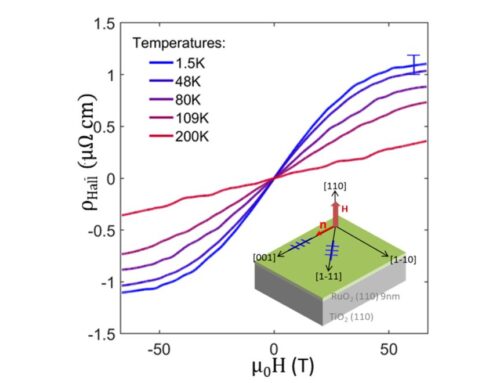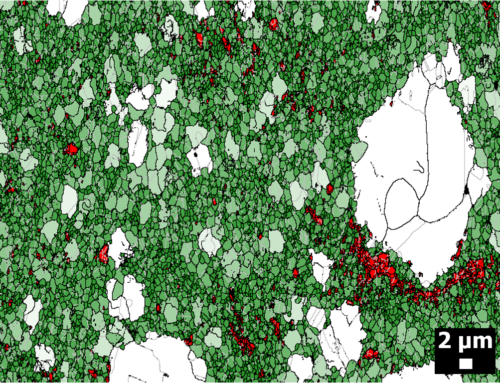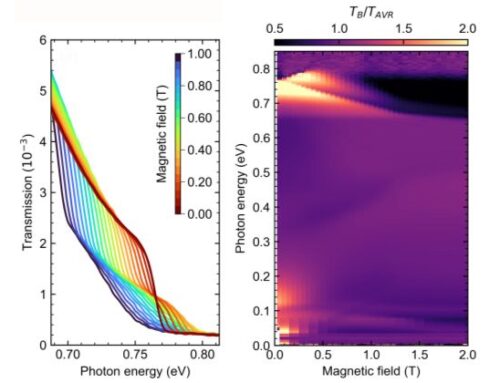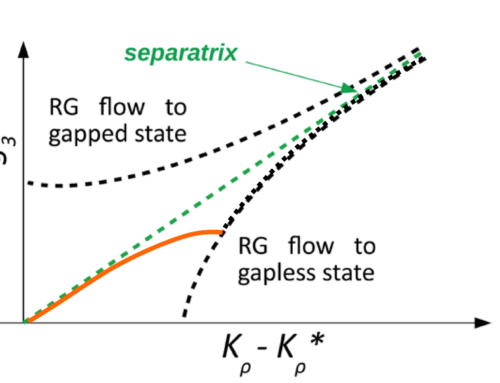Nigel Hussey, HFML and Anthony Carrington, University of Bristol.
Researchers from the UK and Japan, together with scientists from three of the EMFL laboratories, have uncovered a striking crossover in the Hall resistivity across the so-called strange-metal phase of overdoped cuprate superconductors [1]. The work builds on a seminal work carried out at LNCMI-Toulouse back in 2016 [2] and sheds important new light on the nature of the strange-metal phase out of which high-temperature superconductivity emerges. The phase diagram of high-temperature superconductors hasm intrigued condensed-matter physicists around the globe for well over three decades but many outstanding questions remain, including: (i) Is there a quantum critical point at some location in the phase diagram? (ii) If so, are quantum fluctuations associated with the quantum critical point responsible for the anomalous properties of the normal state and the occurrence of superconducting? (iii) Is the pseudogap the ordered phase which is responsible for the quantum criticality? (iv) What is the origin of the pseudogap? In this investigation, the research team headed by Tony Carrington from University of Bristol performed measurements of the in-plane Hall resistivity ρxy(H) of two cuprate families, Tl2Ba2CuO6+d (Tl2201) and Bi2Sr2CuO6+d (Bi2201), concentrating on the limiting behavior that can only be reached at low temperature and high magnetic fields. Their measurements and subsequent analysis established, for the first time, that the low-temperature Hall number transitions from p to 1 + p (where p is the number of doped holes) smoothly across the strange metal regime that spans the region of the phase diagram from the point where the strength of superconductivity is maximized to the edge of the superconducting dome. Significantly, the study reveals that this transitioning is not simply related to the closing of the normal-state pseudogap since reduction in Hall number occurs before the pseudogap opens. Rather, the reduction in carrier density is seen to be correlated with the increase in the strength of the linear-in-temperature component to the resistivity found throughout the strange-metal regime. This finding thus suggests an entirely new feature of the cuprate strange metal, one that links the nature of the strange-metal phase to a gradual decoherence of the quasiparticle states as the pseudogap and ultimately, the Mott insulating state, is approached.

Figure: Bottom panels: Evolution of the low-T, high-field Hall number nH(0) across the strange-metal regime in Tl2201 and Bi2201 [1]. The solid lines show the evolution of Tc with doping. For Bi2201, p* shows the location of the end point of the pseudogap regime as determined by transport measurements on the same samples (for Tl2201, NMR measurements suggest the pseudogap closes at p*=0.19). The top panels show the evolution of the linear-in-T coefficient of the in-plane resistivity with doping.
[1] Reduced Hall carrier density in the overdoped strange metal regime of cuprate superconductors, C. Putzke, S. Benhabib, W. Tabis, J. Ayres, Z. Wang, L. Malone, S. Licciardello, J. Lu, T. Kondo, T. Takeuchi, N. E. Hussey, J. R. Cooper, and A. Carrington, arXiv:1909.08102 Nat. Phys., in press
https://www.arxiv-vanity.com/papers/1909.08102/
[2] Change of carrier density at the pseudogap critical point of a cuprate superconductor, S. Badoux, W. Tabis, F. Laliberté, G. Grissonnanche, B. Vignolle, D. Vignolles, J. Béard, D. A. Bonn, W. N. Hardy, R. Liang, N. Doiron-Leyraud, L. Taillefer, and C. Proust, Nature 531, 210 (2016).
https://www.nature.com/articles/nature16983
Contact: a.carrington@bristol.ac.uk





